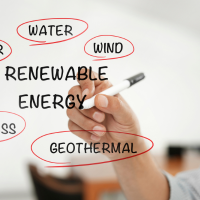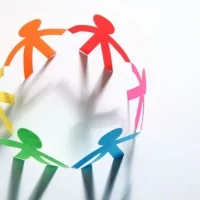Disaster preparedness is a critical aspect of humanitarian work, particularly for non-governmental organizations (NGOs) that operate in regions prone to natural disasters or humanitarian crises. The significance of being prepared cannot be overstated; it can mean the difference between life and death for vulnerable populations. Preparedness involves not only having a response plan in place but also ensuring that communities are equipped with the knowledge and resources necessary to respond effectively when disaster strikes.
This proactive approach helps mitigate the impact of disasters, reduces recovery time, and ultimately saves lives. Moreover, disaster preparedness fosters resilience within communities. When individuals and families are educated about potential risks and equipped with the tools to respond, they are more likely to recover quickly from adverse events.
NGOs play a pivotal role in this process by providing training, resources, and support to local communities. By investing in preparedness initiatives, NGOs can empower communities to take charge of their own safety and well-being, creating a culture of resilience that extends beyond immediate disaster response.
Identifying the Needs of Disaster Preparedness NGOs
To effectively address the challenges of disaster preparedness, NGOs must first identify their specific needs and the needs of the communities they serve. This involves conducting thorough assessments to understand the vulnerabilities and risks faced by different populations. For instance, an NGO operating in a flood-prone area may need to focus on developing early warning systems and evacuation plans, while one in a region susceptible to earthquakes might prioritize structural safety training and emergency response drills.
Additionally, NGOs must consider their internal needs, such as staffing, training, and resource allocation. A well-trained team is essential for effective disaster preparedness; therefore, investing in capacity-building initiatives is crucial. This could involve workshops on emergency management, first aid training, or community engagement strategies.
By aligning their resources with the specific needs of both their organization and the communities they serve, NGOs can create a more effective disaster preparedness strategy.
Building a Strong Online Presence
In today’s digital age, having a robust online presence is essential for NGOs focused on disaster preparedness. A well-designed website serves as a central hub for information dissemination, allowing organizations to share their mission, programs, and success stories with a broader audience. It is important for NGOs to ensure that their website is user-friendly, mobile-responsive, and optimized for search engines to reach potential supporters effectively.
Beyond a website, NGOs should also consider creating informative blogs or resource sections that provide valuable content related to disaster preparedness. This could include articles on best practices, case studies from previous disasters, or tips for individuals on how to prepare their homes and families. By positioning themselves as thought leaders in the field of disaster preparedness, NGOs can attract more visitors to their site and build credibility within the community.
Leveraging Social Media for Fundraising
Social media platforms have revolutionized the way NGOs engage with their supporters and raise funds for their initiatives. By utilizing platforms like Facebook, Twitter, Instagram, and LinkedIn, organizations can reach a wider audience and create a sense of community around their cause. Social media allows NGOs to share real-time updates during disasters, showcase their work in preparedness efforts, and highlight the impact of donations.
To effectively leverage social media for fundraising, NGOs should develop a strategic content calendar that outlines key messages, themes, and campaigns throughout the year. Engaging visuals, such as infographics or videos demonstrating preparedness techniques or showcasing community training sessions, can capture attention and encourage sharing. Additionally, NGOs can use social media to host fundraising events or challenges that encourage followers to donate while spreading awareness about disaster preparedness.
Creating Compelling Campaigns and Content
Creating compelling campaigns is essential for capturing the attention of potential donors and supporters. NGOs should focus on storytelling as a powerful tool to convey their message. Sharing personal stories from individuals who have benefited from disaster preparedness initiatives can humanize the cause and evoke empathy from potential supporters.
These narratives can be shared through various mediums such as videos, blog posts, or social media updates. Furthermore, campaigns should be designed with clear calls to action that guide supporters on how they can contribute. Whether it’s donating funds, volunteering time, or sharing information within their networks, clear instructions empower individuals to take meaningful action.
Seasonal campaigns tied to specific events or awareness days related to disaster preparedness can also create urgency and encourage participation.
Engaging with Donors and Supporters
Regular Communication: The Key to Transparency and Trust
Regular communication is essential in keeping supporters informed about ongoing projects, successes achieved through donations, and future goals. This transparency fosters trust and encourages continued support from donors and supporters.
Engagement Beyond Traditional Communication
Engagement can take many forms beyond traditional communication methods. Hosting events such as webinars or community workshops allows NGOs to connect with supporters on a personal level while providing valuable information about disaster preparedness.
Personalized Appreciation and Recognition
Additionally, recognizing and appreciating donors through personalized thank-you messages or spotlight features on social media can strengthen these relationships and encourage ongoing contributions.
Utilizing Crowdfunding Platforms and Tools
Crowdfunding has emerged as an effective way for NGOs to raise funds for specific projects or initiatives related to disaster preparedness. Platforms like GoFundMe, Kickstarter, or Indiegogo allow organizations to present their cause to a global audience while providing an easy way for individuals to contribute financially. The key to successful crowdfunding lies in crafting a compelling narrative that resonates with potential donors.
When launching a crowdfunding campaign, NGOs should clearly outline the goals of the initiative, how funds will be used, and the impact it will have on communities at risk of disasters. Engaging visuals and regular updates throughout the campaign can help maintain momentum and encourage sharing among supporters’ networks. Additionally, offering incentives such as exclusive updates or recognition on social media can motivate individuals to contribute at higher levels.
Measuring and Evaluating Success
Finally, measuring and evaluating the success of disaster preparedness initiatives is crucial for continuous improvement and accountability. NGOs should establish clear metrics for assessing the effectiveness of their programs—this could include tracking the number of individuals trained in emergency response techniques or measuring community awareness levels before and after preparedness workshops. Regular evaluations not only help organizations understand what works but also provide valuable insights into areas needing improvement.
Sharing these findings with stakeholders—including donors—demonstrates transparency and commitment to accountability. By continuously refining their strategies based on data-driven insights, NGOs can enhance their impact in disaster preparedness efforts and better serve the communities they aim to protect. In conclusion, disaster preparedness is an essential focus area for NGOs working in vulnerable regions.
By understanding its importance, identifying needs, building an online presence, leveraging social media for fundraising, creating compelling campaigns, engaging with donors, utilizing crowdfunding tools, and measuring success effectively, organizations can significantly enhance their capacity to prepare communities for disasters. Through these actionable strategies, NGOs can not only save lives but also foster resilience in the face of adversity.








































